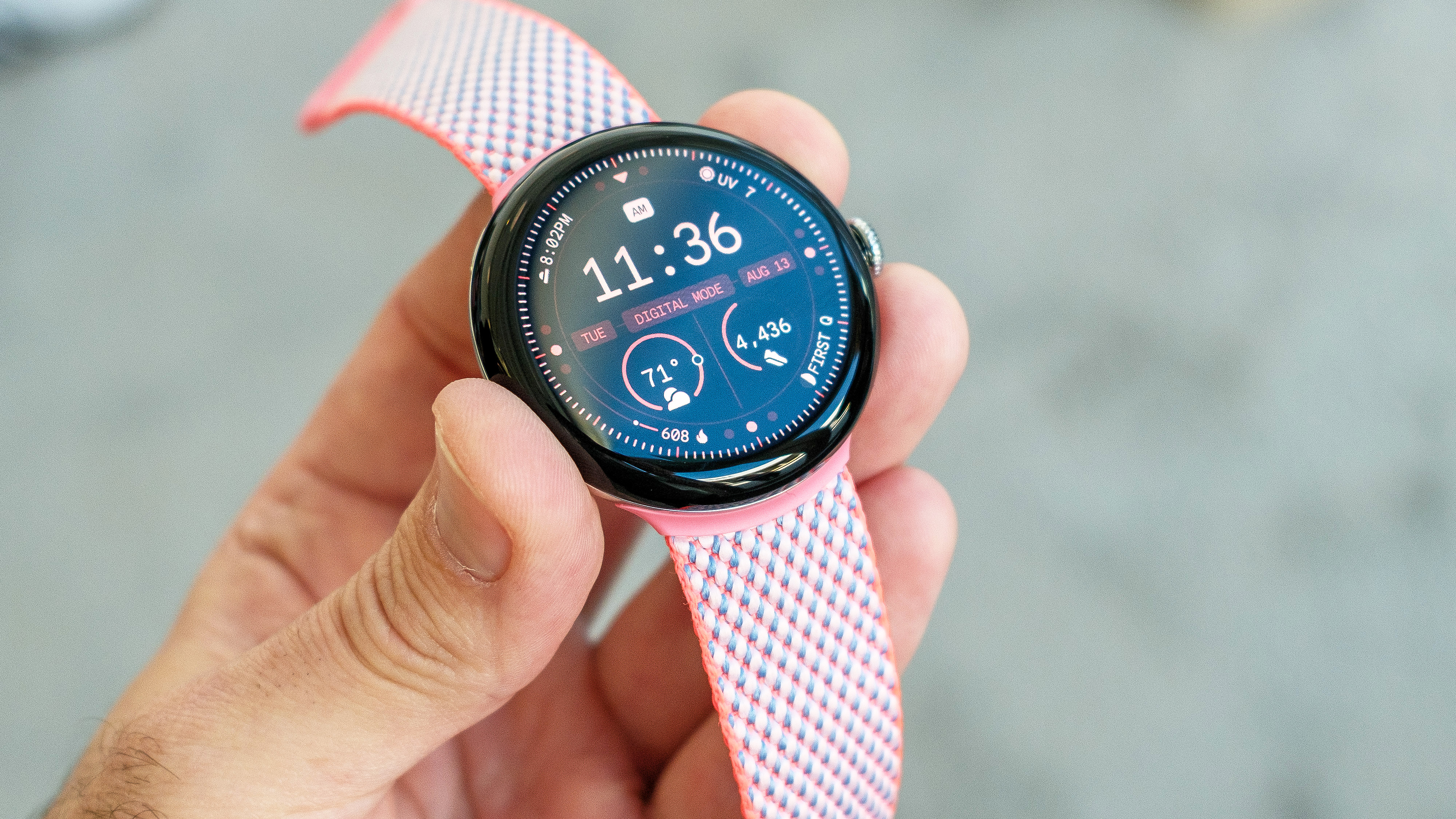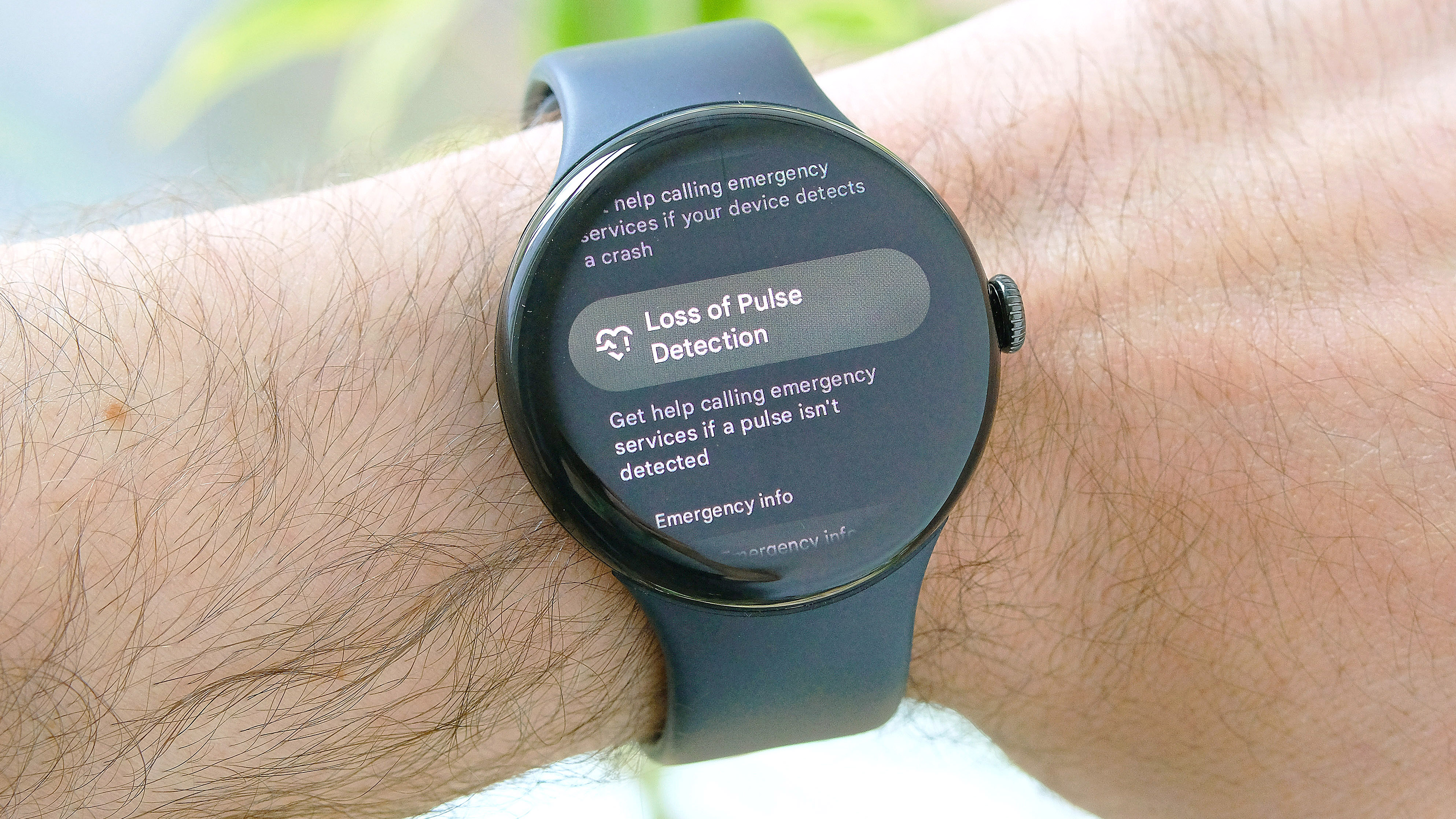I thought Pixel Watch 3’s pulse loss detection was a gimmick — until I read this study
If you have a health emergency, this feature might save your life

When Google announced the Pixel Watch 3 last summer, the company promised it would get a life-saving new feature — Loss of Pulse detection — at a later date. I was skeptical, and not just because you shouldn't buy devices on what they might do.
Even though it's clearly one of the best smartwatches (how could it not be after Google decided to bury the best Fitbits and incorporate that brand's fitness tracking smarts into its own watch), a life saving software update sounded like vaporware to me.
But then in February this year, six months after the Watch 3 launched, Google was granted FDA clearance for the feature, and, in March, it began rolling out to all Watch 3 owners in the U.S.
That was one objection overcome — the company did release it — but I was cynical that a feature on the Pixel Watch 3 would be as revolutionary as Google claimed. But then I read the team's study in the journal Nature, and it changed my mind.
Smartwatch safety features could save lives
To go alongside the launch of the feature, the research team at Google published a study in the scientific journal Nature detailing how they developed the Loss of Pulse detection feature and the algorithm that detects when your heart stops beating.
There's a lot of detail in there, which surprised me as Big Tech companies are usually very reluctant to discuss how these critical health features actually work. I guess that's not shocking; they do have products to sell and need an edge over the competition.
But if you spend your money on a new smartwatch because it could potentially save your life in a specific circumstance, you want to be sure it can actually do that effectively. A recent experience on vacation brought home to me just how critical that is.
Get instant access to breaking news, the hottest reviews, great deals and helpful tips.
I was involved in a vehicle collision while traveling, and had been wearing the Amazfit T-Rex 3 for testing. Thankfully, everyone involved was okay, so when taking stock later on, I realized this would have been a rare test of some critical features.
Unfortunately, the T-Rex 3 doesn't have collision detection like the Pixel Watch or Apple Watch Series 10, so all I could do was look nervously at how my heart rate rocketed at the moment the two vehicles smashed into each other.
But this got me thinking; how would you know for sure that the collision detection feature worked, until it's too late? And similarly, how would you know if the Pixel Watch 3 Loss of Pulse detection can actually save your life?
Does it even actually work?
Of course, when you think about it, the tech companies have the same problem. You can't really test a feature like this in the real world; you'd need to wait until someone has a cardiac arrest and then delay care to see if the watch does it's job.
So the team came up with a lab testing method instead. When my colleague Dan Bracaglia interviewed Edward Shi, the product manager on the Google Safety Team, Shi mentioned that they enlisted "stunt" participants.
The team used "a pneumatic tourniquet to cut off blood flow in an arm, to simulate temporary pulselessness," and then would see if the watch picked up on these signals. This is similar to how Apple tests its collision feature with crash test dummies.
It's not a real world test, but it's an approximation. Though this is a good reminder that these features aren't guaranteed to work, so if you have a watch with safety tools like this, it's a good idea not to be solely reliant on them.

And while there's a good appeal to authority with the 'FDA cleared' label, this isn't quite as useful as it seems. There are two main FDA labels; cleared and approved. If a product or feature is "cleared" that doesn't mean that it's shown to be effective.
What it really means is that the FDA is aware of the feature and believes it to be similar to something else already for sale or in use, so the applicant (ie, Google) can market it. But the FDA has not actually verified anything at this stage.
To see whether it works as intended, it'd need to be FDA approved. But just because Google didn't aim for approval, that doesn't mean they don't have confidence in it. In a past life, I worked in regulatory affairs for a medical device company.
To gain FDA clearance, it's (almost) as simple as filing some forms. But FDA approval is the standard medicines are held to, so you need a lot of evidence and testing to even begin the very lengthy approval process, so many companies don't bother with this.
Some lives saved is better than none
Okay, so Google has been a bit more open about the Loss of Pulse detection feature than it's peers, but that doesn't quite explain why I changed my mind and stopped seeing the LoP feature as a gimmick.
According to Shi, one of the main motivations to develop LoP was that "many of these [cardiac arrests] are unwitnessed," so someone's heart could stop when they're alone and no one would know, so no one calls for help.

And the way I see it, even if the Loss of Pulse feature can't detect all events with absolute certainty, there'll be enough people who suffer some form of heart-stopping emergency who will get life-saving treatment because the watch called for help.
Plus, the Nature study notes that the algorithm "was trained on smartwatch sensor data collected from diverse participants (age, sex and skin tone)." This is super important because different skin tones absorb light at different rates, effecting optical heart rate measurements the system is based on.
Historically, tech companies have thought very little about training their systems on diverse, less homogenous sources, so I was relieved to see Google had at least thought about it (even if you couldn't verify this as participants' data is hidden due to protect their privacy).
Do I now believe that it'll work perfectly every time? No. But even if it only works half the time, that'll still save lives, as without it, no one would come to the aid of people who have suffered a potentially fatal health emergency.
More from Tom's Guide
- Google Pixel Watch 3 is first smartwatch with pulse loss detection — here’s how it works
- How to setup Loss of Pulse Detection on you Pixel Watch
- Google Pixel Watch 3 just got FDA approval for pulse detection feature — here's when it's coming

James is Tom's Guide's Buying Guide Editor, overseeing the site's buying advice. He was previously Fitness Editor, covering strength training workouts, cardio exercise, and accessible ways to improve your health and wellbeing.
His first job at as a sales assistant in a department store, and this is where James learned how important it is to help people make purchasing decisions that are right for their needs, whether that's a fountain pen to give as a gift or a new fridge for their kitchen.
James is an advocate for sustainability and reparability, and focuses his reviews and advice through that lens to offer objective insights as to whether a specific product or service will be right for your needs.
You must confirm your public display name before commenting
Please logout and then login again, you will then be prompted to enter your display name.

